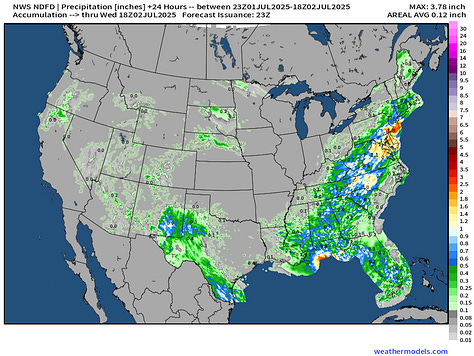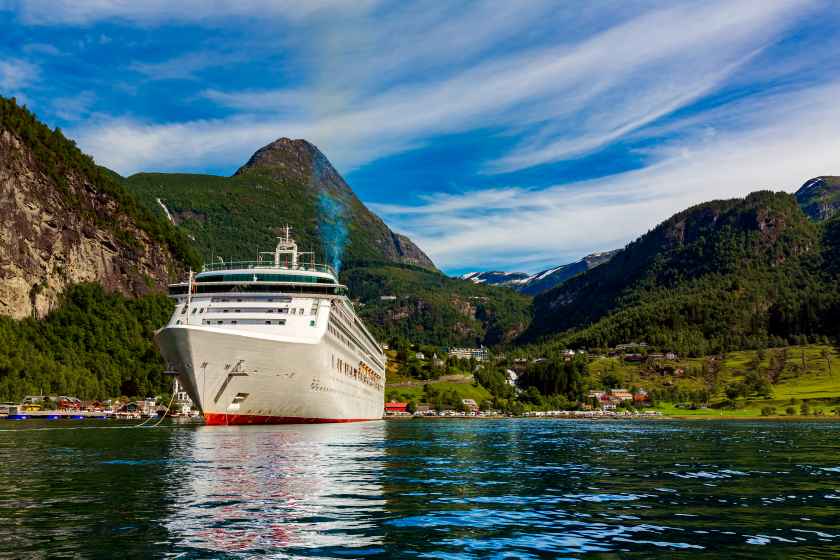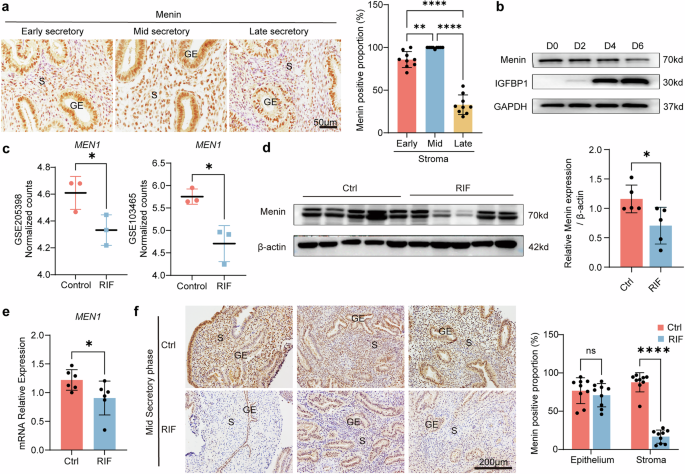July 1, 2025 Hurricane Season Tuesday - by Dr. Ryan Maue
. My expectation for this year is 14 named storms, 7 hurricanes, and 3 majors. So far, 2 named storm, 0 hurricanes, and 0 majors.
Hurricane Flossie is in the left corner (110 mph winds) and pop-up convection with monsoonal flow — assisted by the circulation around Flossie — is bubbling up in Mexico, Texas, and even into the Southwest including around Las Vegas.
Frontal boundary is draped from New England through Mid-Atlantic and into the Southeast. We will watch this boundary become stationary and perhaps focus the development of a tropical system in 5-7 days.
Clouds and showers have knocked down temperatures east of the Mississippi. Only 47 million at/above 90°F across the rest of the Lower 48. However, almost 5 million of those are at least 110°F including Phoenix.
Overall, the Lower 48 is 1.1°F above average with the most warmth in the Pacific NW and northern Rockies. Rain/clouds cooling off western Texas and New Mexico.
60s look quite popular across the northern half of the Lower 48 — comfortable for July 2nd!
76 million at/above 90°F isn’t remarkable for early July. This is a wet/unsettled pattern that favors mild temperatures — no heat dome!
Showers and storms will fizzle into the overnight hours as the CAPE is used up. Heaviest rain in the Mid-Atlantic with slower moving frontal boundary storms embedded within a moist SW flow.
Heavy rain and storms in the Southwest on Wednesday with monsoon moisture tempering the heat.



Tail end of a frontal boundary stalls out over the Gulf Coast focusing heavy rain for days. An area of low pressure could also develop leading to even more rain across the FL peninsula.
While the tail end of the frontal boundary takes a while to start circulating, there is a mid-level cyclonic swirl that could translate to the surface over the very warm Gulf Stream waters off the U.S. Southeast coast around Sunday time frame (with ECMWF 12z).
Note, another little low may spin (similar to Andrea) out of the tail end of trough passing through the mid-latitude Atlantic.
These non-traditional tropical storm formation routes are typical in early part of the season. As the Atlantic subtropics are abnormally warm, stationary fronts or cut-off troughs find favorable environment for further development.
Thank you to readers continuing into this Hurricane Season. My goal is to keep you informed about ongoing extreme weather events inside and outside of the tropics, but also a week (hopefully) heads up on what’s coming. I’ll be using a variety of weather modeling output, some of it may be unfamiliar, but it’s state-of-the-art and industry leading standard.
Flossie quickly decays over cooler water west of Baja California.
The system off the SE Coast is not well organized in the ECMWF 12z cycle. However some ensembles are more interesting. 30% looks about right for development chance.












